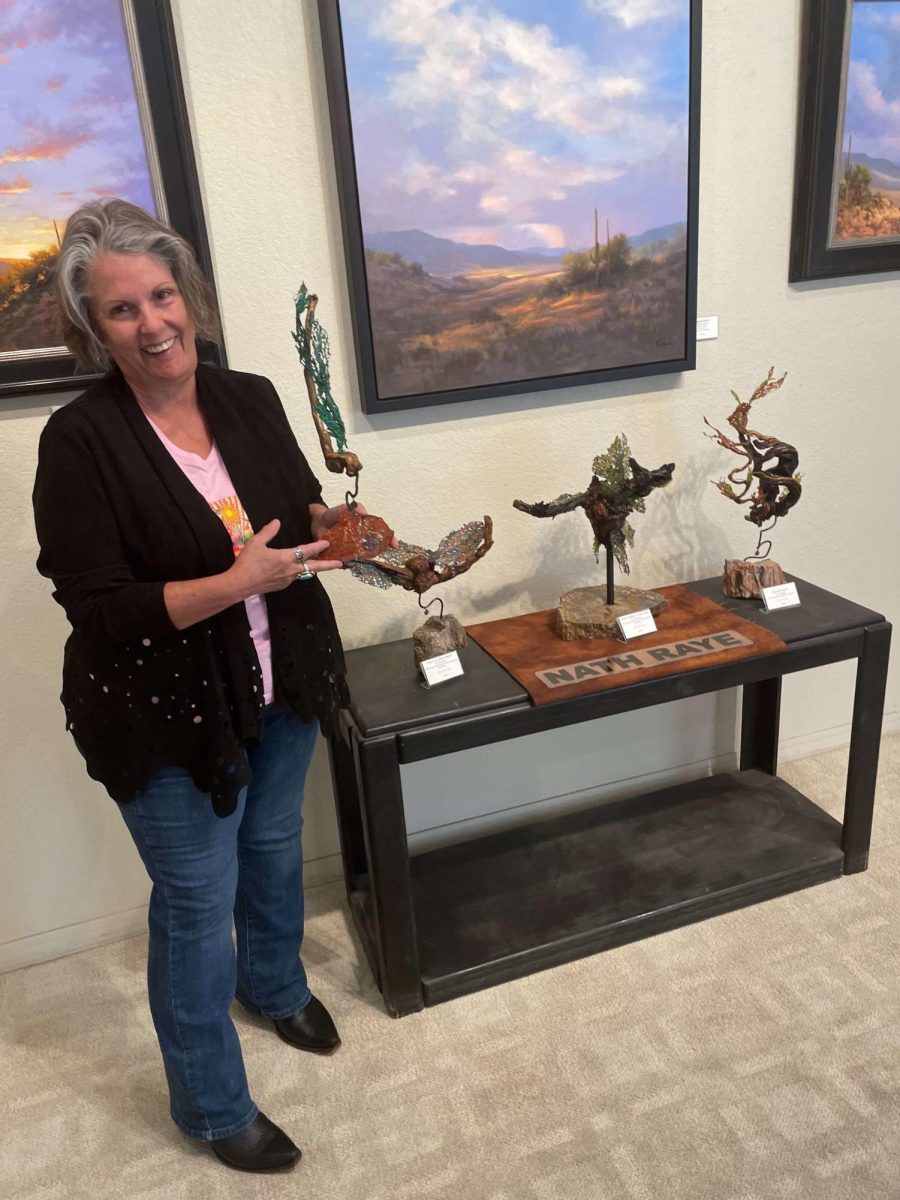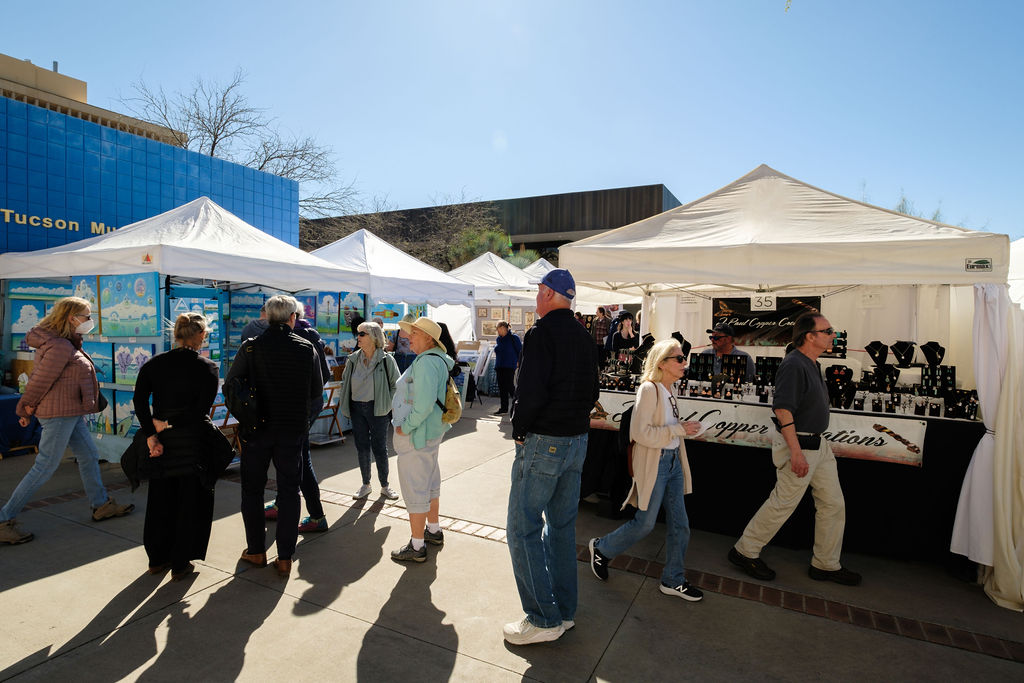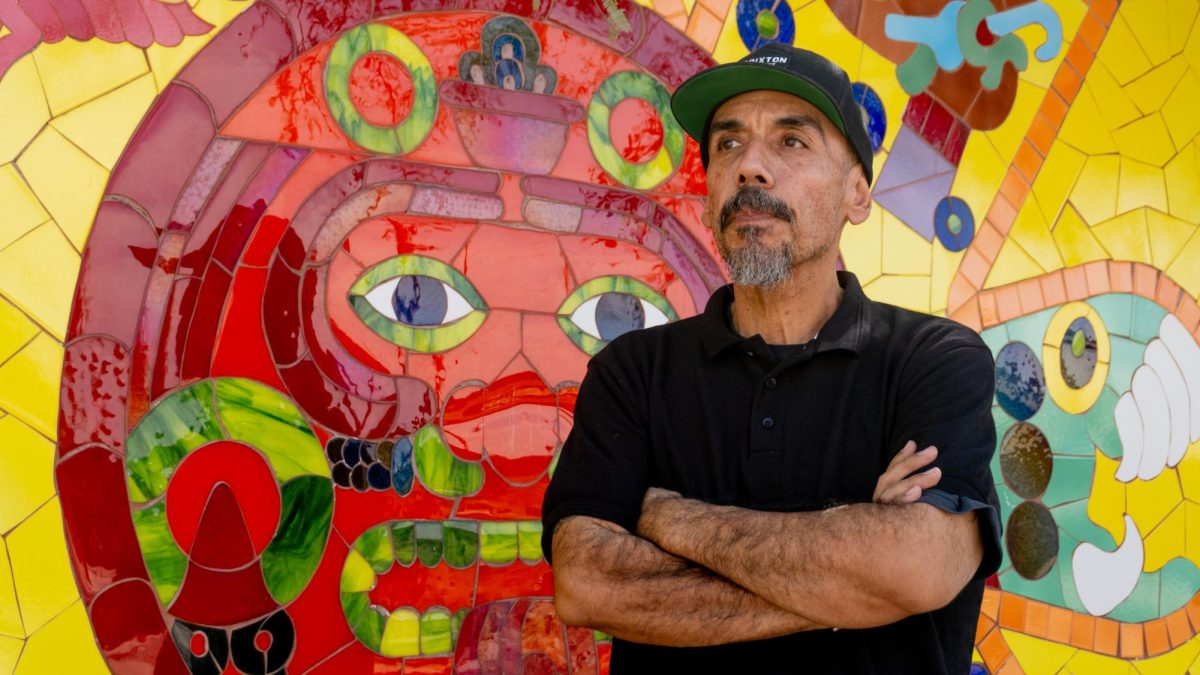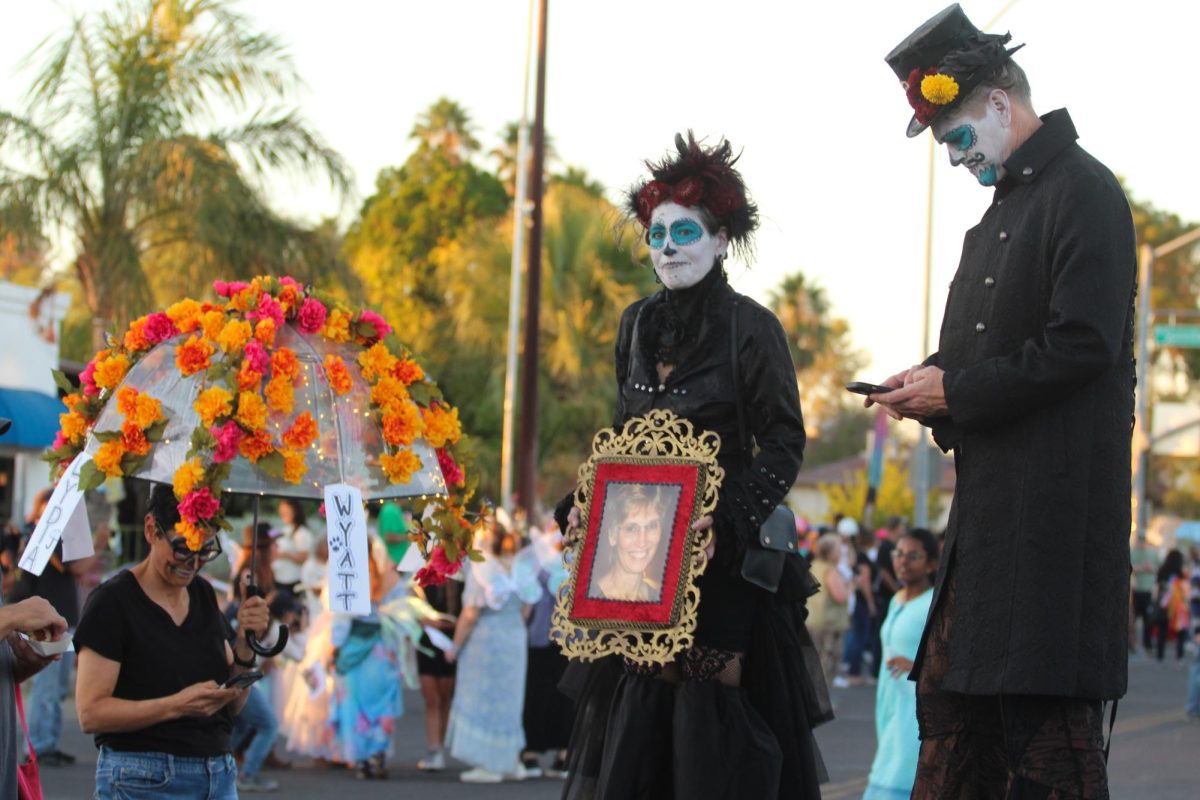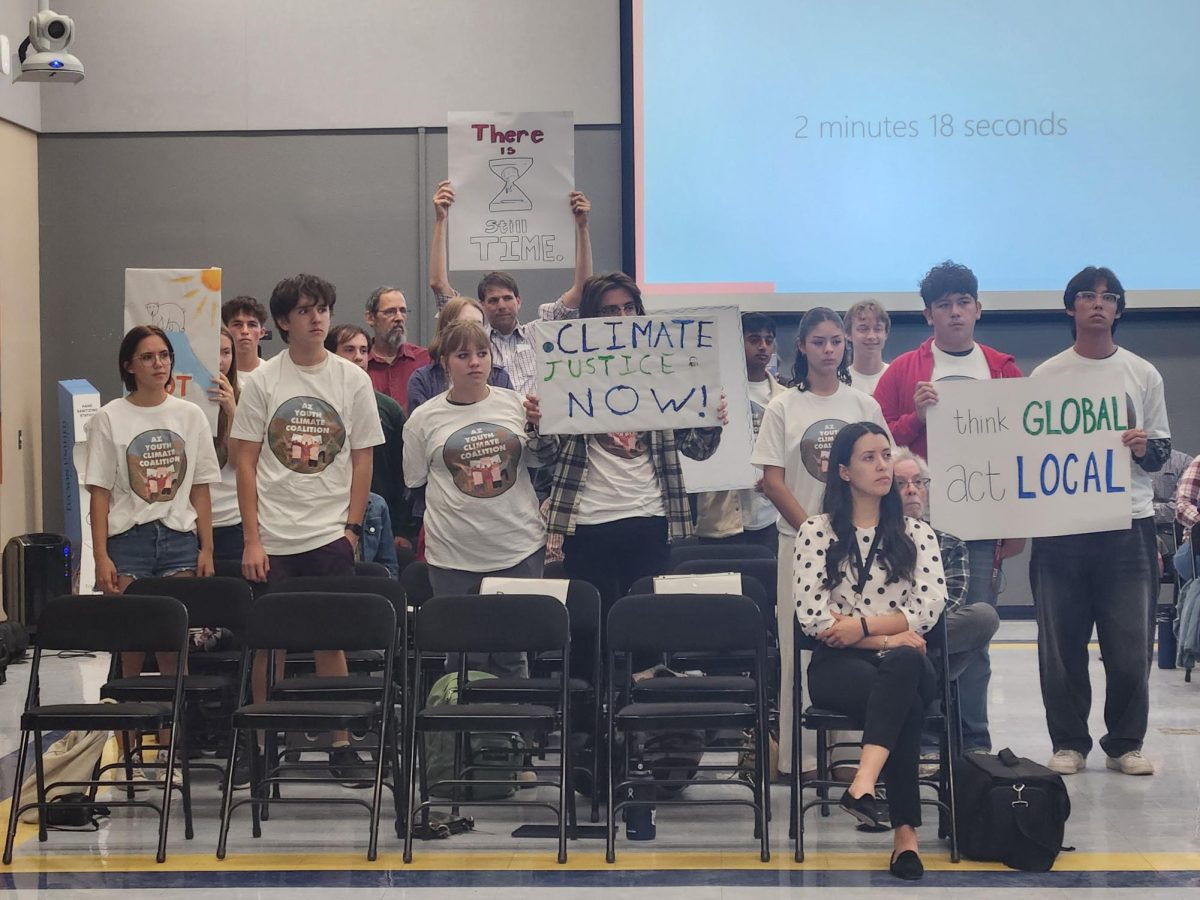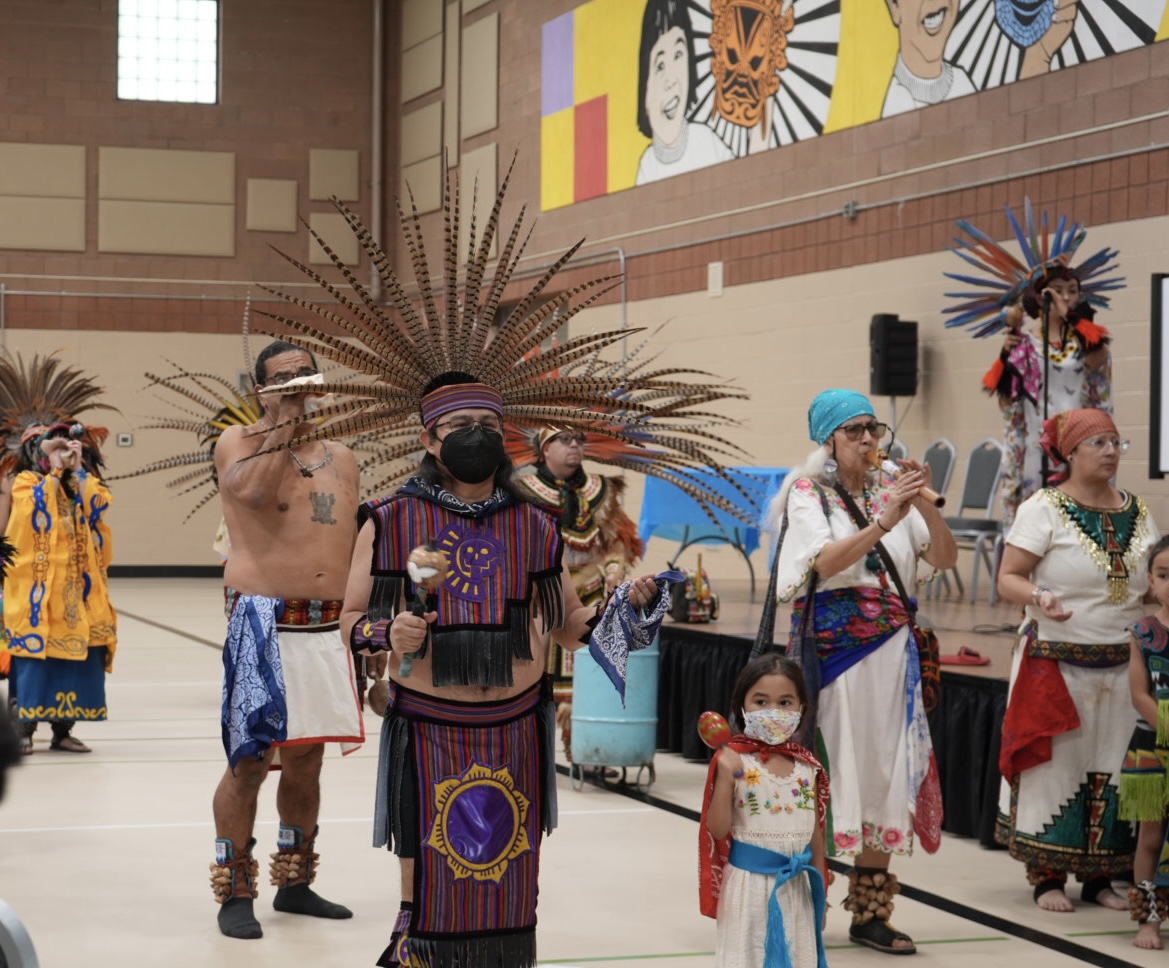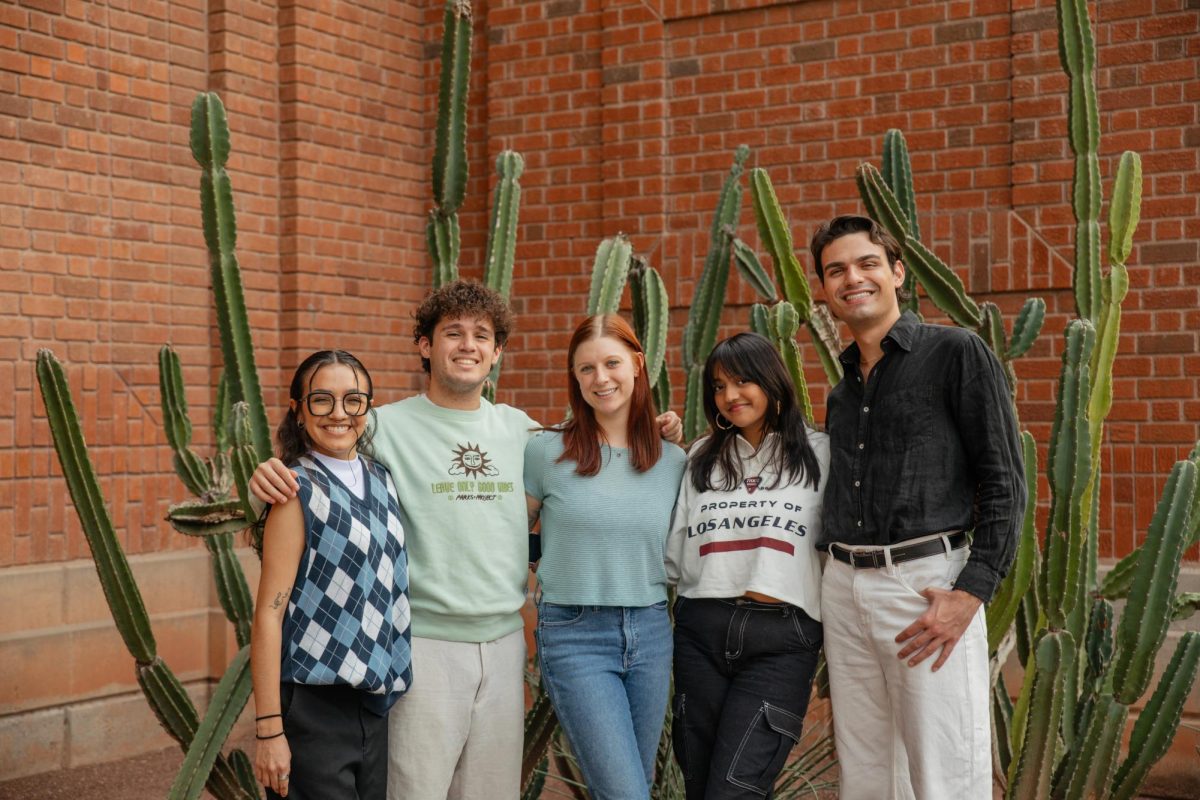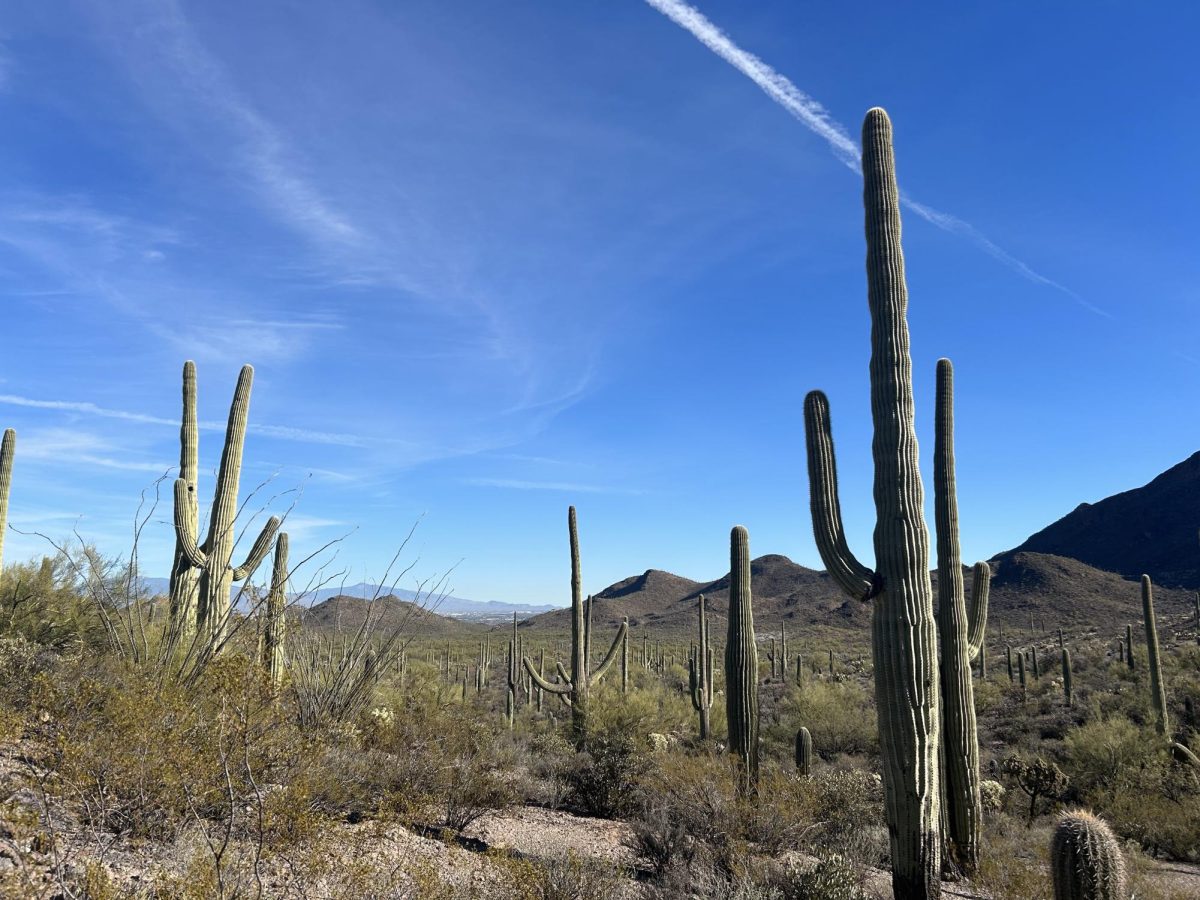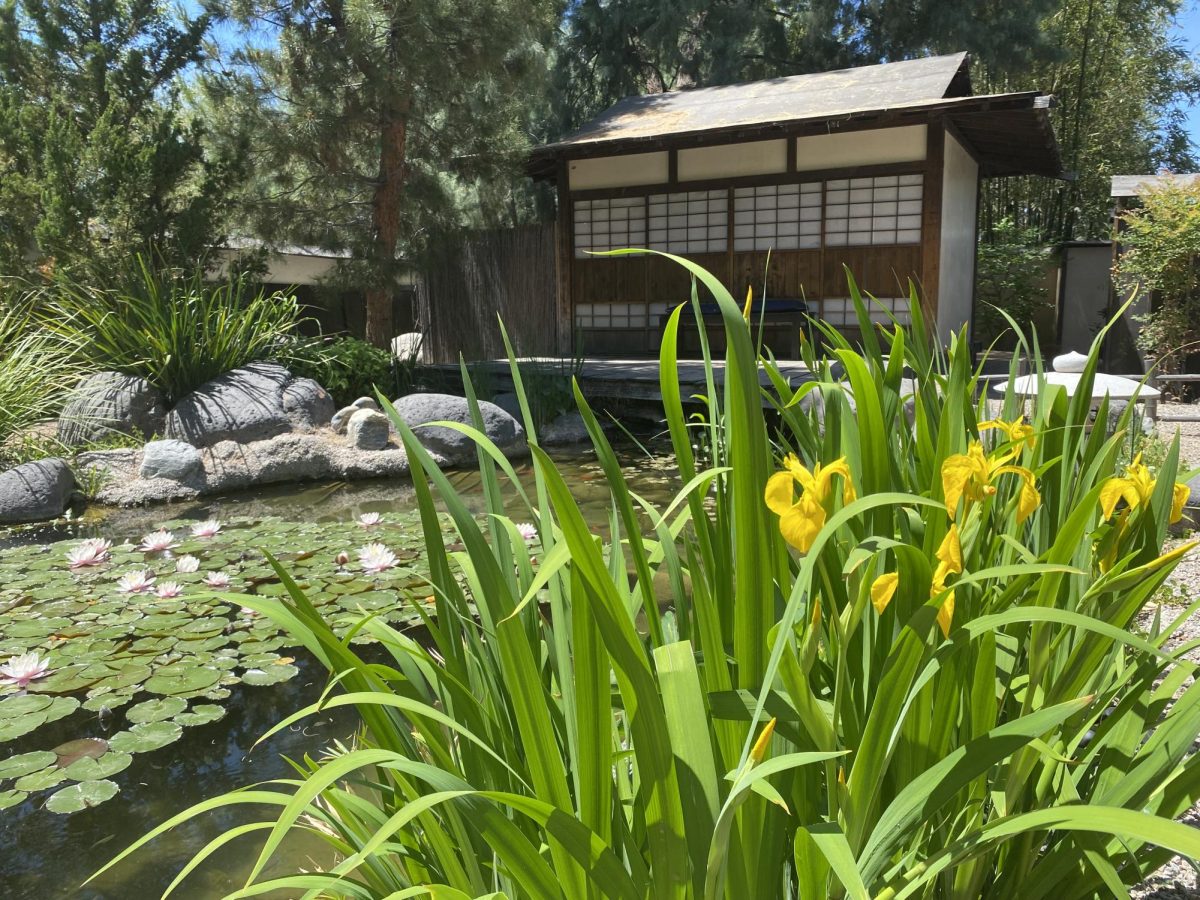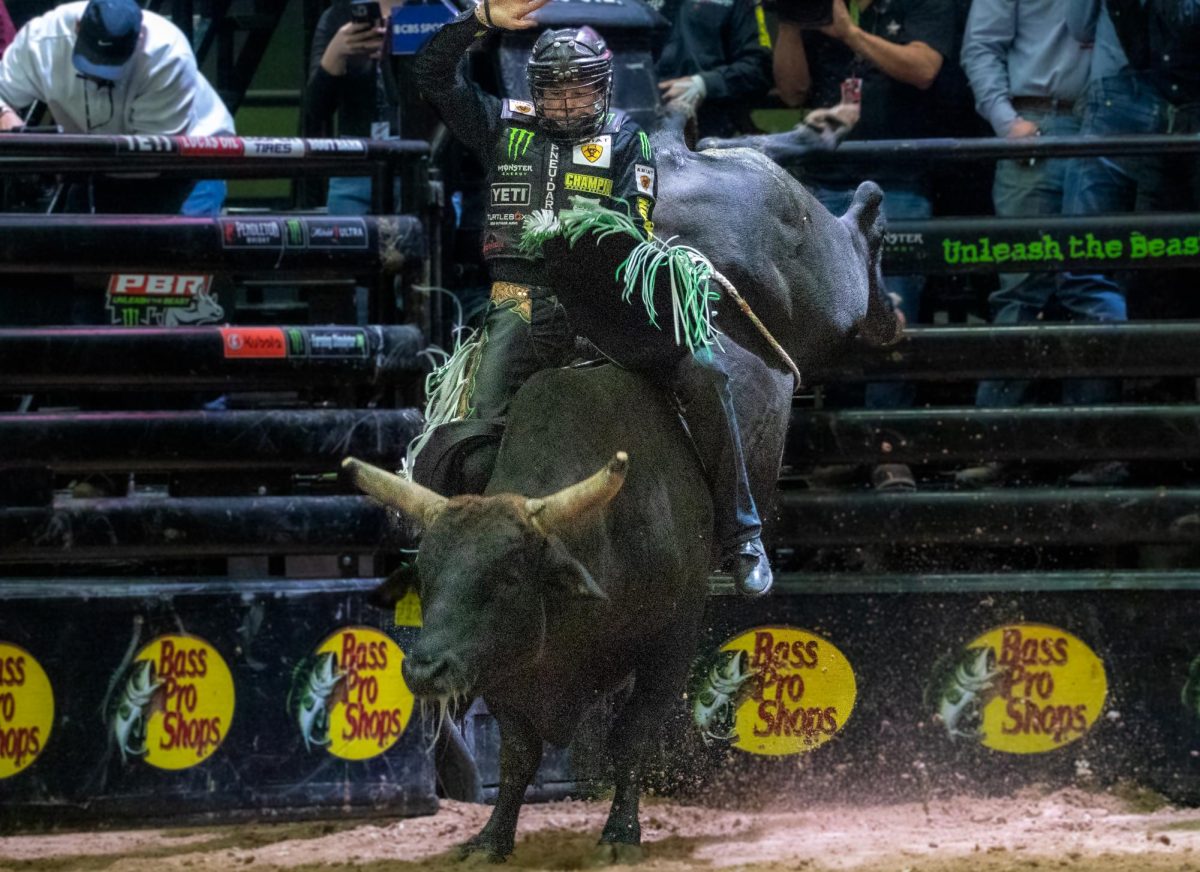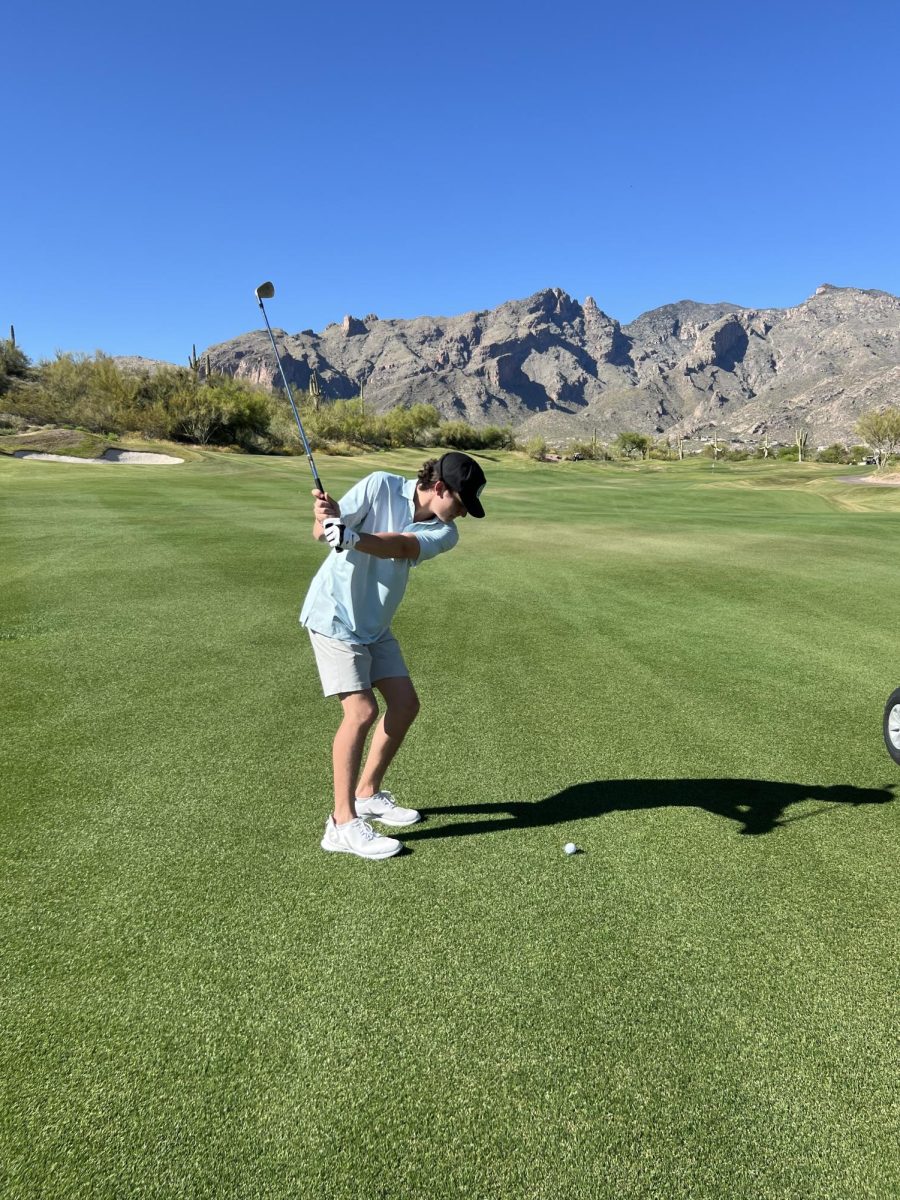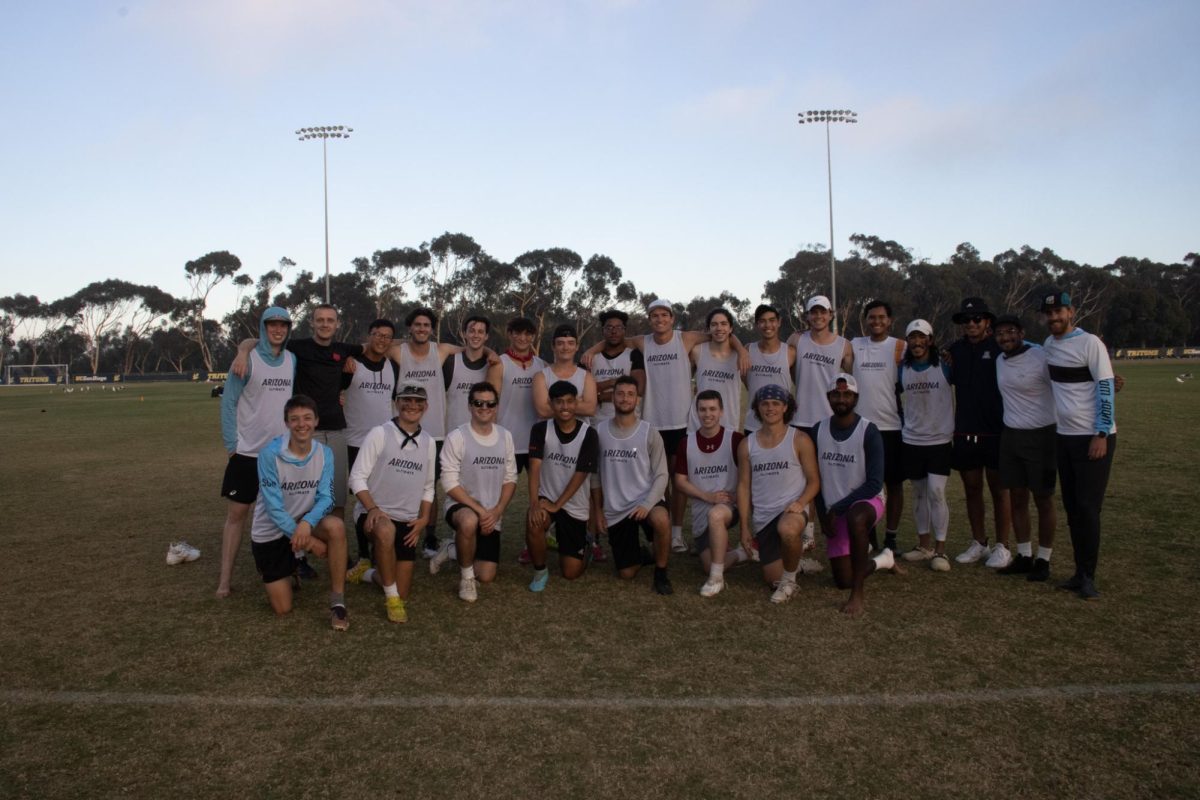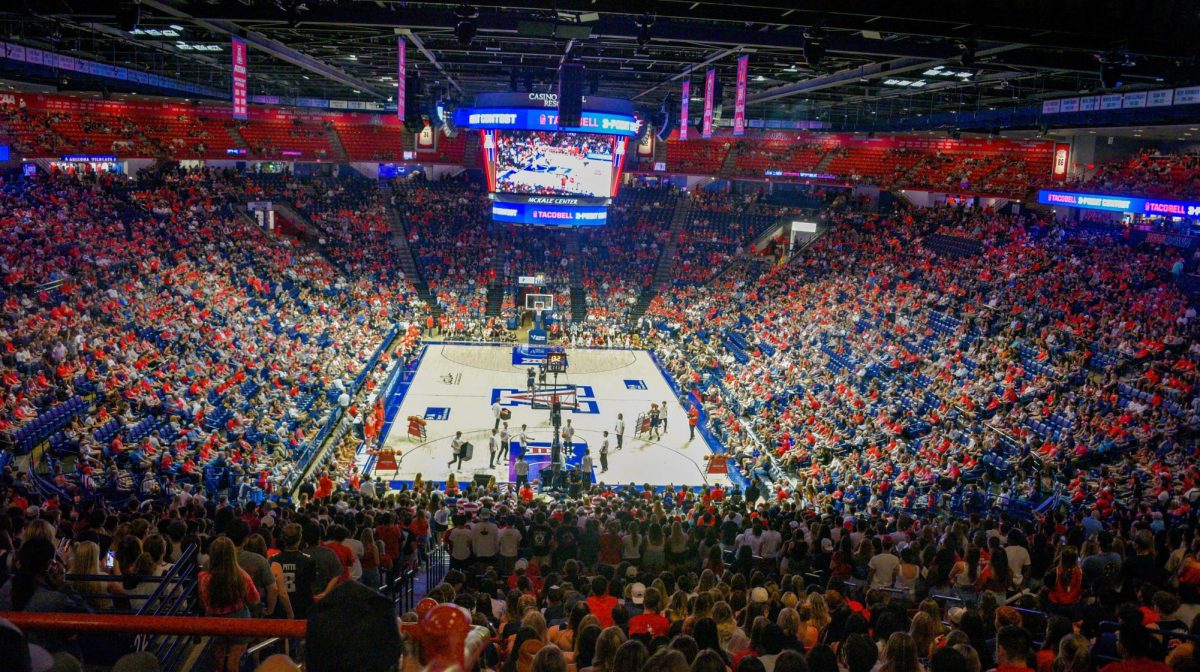

The couple keeps a home chocked full of character. On a hook beside the door swing a pair of binoculars. Directly beneath, worn hiking poles leaned into the corner of the room. The couple is curled up together on a soft gray couch across from me. Between us sits a dark wood coffee table adorned with a faded mountain hat, a sewing machine and other oddities.
A shelved wall carries the few heirlooms the couple has kept over the years: aged photographs, an intricately painted tea kettle, a carved wood sea turtle, a pair of glass bottles and a few other eclectic pieces. “We think it’s all kind of clutter but it has emotional value to it,” Paul Hammond noted. On the opposing wall hangs a decade-old photograph of the couple taken at Elk Meadows. On each of their shoulders are heavy packs, hiking boots on their feet and a mountain of blues, purples and browns sprawled behind their smiling faces.
Megan McGowan is tall and lean, with smooth brown hair, a natural face and perhaps the most contagious laugh I have ever heard. Hammond stands slightly shorter, with tan skin, a dark head of hair and a scruffy, salt and pepper beard. I asked Hammond’s coworker, Tyler Schweigert, what his first impressions of Hammond were. “Dirtbag. Easy,” he said with a chuckle. It’s a highly regarded compliment in the outdoor industry, it means you’re living off the land, living in the land, living the dream.
Perhaps this photograph was taken where the couple more honestly calls home. Where their living room is adorned with pine needles for carpet and a crackling campfire serves as a coffee table. Where their walls hang views of towering treelines and ragged mountain ranges. Where their bedroom lies wherever they pitch their tent and unroll their sleeping bags for the night.
Perhaps where McGowan and Hammond feel most at home is far from any house at all, somewhere deep in the wilderness, following an outstretched trail.
I first learned of the couple when a friend recommended their blog to me. Typed across the top of the web page in a neat font: Hiking Hammonds: Appalachian Trail, Pacific Crest Trail, Continental Divide Trail, and Beyond.
With each long-distance trail stretching out over a thousand miles, it is a feat to hike even a single one. Completion of all three trails, however, wins its own achievement: the Triple Crown. Those who have hiked the mind-boggling 7,900 miles it consists of, like the McGowan-Hammonds, are proudly referred to as Triple Crowners. As of 2018, only 396 people had registered as Triple Crown recipients, according to the American Long Distance Hiking Association.
I read through the couple’s blog, wide-eyed and desperate with curiosity. I wanted to know who they were. I was unsatisfied with what I had read on their blog, posted by McGowan. I know what they ate for breakfast on day 125 of the Continental Divide Trail, what the weather was like on the 84th day of the Pacific Crest Trail, and what their recipe for Trail Coconut Peanut Noodles is. I know they left 7,900 miles worth of footprints on the trails, but not how 7,900 miles worth of trails had left their own prints on them.
I ask McGowan why the posts were so empty of emotion. “The trail’s kind of an emotional roller coaster. You just go through highs and lows, and it’s difficult to convey,” she responds with a shrug. I chuckle, looking at the Triple Crowners in front of me. Their whole lives must be riddled with highs and lows, hesitantly stuck between living on the trail and living away from it.
The couple met through a mutual friend on a Monday night in 2008 in Scottsdale, Arizona, their homes at the time, over a half-priced bottle of wine. At the time, McGowan was preparing to move to Switzerland and Hammond to Portland, Oregon. Each of them grew up in families who moved regularly, their circumstances pulling them from state to state.
McGowan recalls her childhood home, placed in the mountains of New Mexico, just outside of Albuquerque. The home backed up against national forest. “There was a trail that started right outside of our backyard that went all the way up to like the ski lift and s***, like up on the top of the mountains,” she reminisces. “That was probably my first experience with having that freedom outdoors.”
Hammond thinks back to living near a river in Virginia, where he fished and swam and played on obstacle courses. When his family moved to Hawaii, he recognized that he could play outside 12 months out of the year. When the moving didn’t stop, he discovered the one static in his dynamic childhood: being outside. “(That) was a place where I felt comfortable because it’s the thing that didn’t change everywhere I was going.”
Each grew comfortable with change, new experiences, new places, dynamic lives — they found familiarity in the outdoors.
Months later, when McGowan came to visit Hammond in Portland, the two went on their first hike together in Forest Park. “We were like two desert people going to the Pacific Northwest. Everything’s growing on top of other things, and there’s moss everywhere,” McGowan says in an epiphanous tone.
Half a decade and dozens of hikes later, McGowan and Hammond married in 2013, and honeymooned by backpacking in the Grand Canyon and exploring Canyonlands in Utah. Sometime later, one of them carved open a can of worms: the idea of hiking the Appalachian Trail.
“I kind of had the fear that we wouldn’t like it and wouldn’t do it, but I would never say that. And I think you were the same way,” Hammond says, turning to his wife beside him on the couch. A lighthearted smile draws across his face. “Like maybe we’re not going to like it. Maybe we’re not going to succeed, but I’m going to make myself do it unless she gives in first. So I think a lot of it was being stubborn.”
Hammond’s father, Daniel, died of cancer at the age of 58. His passing relieved the couple of their ties and debt. His father’s young age also inspired Hammond to better enjoy life and silence his worries. He quit his job as a chef and looked to the trail as a means of healing.
Thus, in 2016, the stubborn pair embarked on their 2,200-mile trek. On that journey, they adopted their trail names: McGowan as Sourstraws and Hammond as Sauerkraut. Another Triple Crown successor, and a friend of the couple nicknamed Akuna, explains this phenomenon: “A simple name for a simple life.”
McGowan earned her trail name one day at Neels Gap on the Appalachian Trail. A few days earlier she had noted her envy of other thru-hikers. “I remember at night, after we ate dinner, I was watching everyone bust out M&M’s.” So, when she hit the first resupply point, being a fan of sour candy, she fetched herself five packs of Sour Punch Straws. The couple was hiking near another couple, Lewis and Clark, and took turns passing one another as the other couple took a break. After Lewis and Clark had leapfrogged by numerous times to the sight of McGowan chomping away at Sour Punch Straws, they jokingly remarked, “How the f*** many Sour Straws do you have in there?”

Hammond adopted his name after a trip with another set of hikers. The group had rented a hotel together for the night and decided to treat themselves to kielbasa sausages. McGowan admitted, “We were all disgusting in that we would love to have sauerkraut, but who should carry it if no one wanted to carry it?” When Hammond volunteered to carry the 2 pounds of sauerkraut, he was appreciated, but when the bag broke in his pack and he spent the night cleaning out the smell of fermented cabbage, he was given Sauerkraut as his trail name.
The couple were known as “The Sours” for over a year, until Hammond had been renamed Piñata. The new name was given after unloading enough gear from his pockets to elicit the comment, “Wow, you explode like a piñata!” Hammond’s notorious habit of handing out Jolly Ranchers from pockets on his bright clothes helped to secure the new name.
After 182 days of walking together, on September 28th, 2016 at 10am, they reached Baxter Peak on Mount Katahdin, the tallest mountain in Maine. They snapped a photograph together, each with bright red jackets, a fist in the air and smiles on their faces. In front of them was a large wooden trail post, “Northern terminus of the Appalachian trail.” Behind them, the thick white fog they had spent their days living in.
McGowan posted to their blog that evening: “Got a hotel room, ate a bunch of food, got cleaned up, and are now relaxing in front of the TV with beer. What a luxury.” Missing from the post were the grand reflections on their journey: What did they discover about themselves? How did the trail encapsulate them, and how did they encapsulate it? What did they find in that thick, chilling fog?
Whatever it was, they must have been drawn back. They decided together that there was more trail for them to hike. With the help of their families, some income from odd jobs and Hammond’s encouraging words—“There’s always something around the next bend”—the two set off on the Pacific Crest Trail on May 6th, 2017. They reached the terminus 149 days later, snapping a photograph at the final trail post—each with cobalt blue shirts, two fingers in the air to signify their second trail completed and smiles on their faces.
On May 5th, 2018, in the Big Hatchet Mountains Wilderness Study Area in southwestern New Mexico, windblown dust flew around them as they set off on the Continental Divide. On day 125, September 5th, 2018, the two emerged from the trailhead and spotted the border monument located between the customs checkpoint of Canada and the United States—the end of their hike. The two ran down through the cool wet breeze the weather brought them, down to the stone monument carved with the words “International Boundary.” The couple snapped a photograph, each with trekking poles in hand, a palm against the cold stone of the monument and smiles on their faces. They toasted with celebratory whiskey that McGowan’s father had gifted them, raised their thumbs and hitched a ride home—wherever they chose to find it next.
Over a year later, that home is embodied inside an old adobe in Tucson, Arizona, baking beneath the sun like pottery in a kiln.
McGowan returned to her former job at Whole Foods, working in the specialty department. Since then, she has picked up a few other jobs writing for Trek, an online magazine that hosts hike blogs, sharing gear reviews and customizing backpacking itineraries for others. For hobby, she uses her sewing machine to craft gear of her own, including the ultralight backpacks she sported on the Pacific Crest and Continental Divide Trails. “She’s definitely the breadwinner,” Hammond admits.
Hammond works as a manager at Summit Hut, a locally owned outdoor sports store. Being detail-oriented and an experienced backpacker, he memorizes the ounce weight of gear, fits Tucsonians for packs, sizes feet for ideal hiking boots and thrives in an environment so passionate about the outdoors. His friend and coworker Schweigert balls up his fists and bobs them up and down to describe him: “When he walks, he walks like this,” he says, gesturing, “and he’s always carrying his trekking poles, whether they’re in his hands or not.”
With jobs inspired by the outdoors and a home in the vast Sonoran Desert, it seems as though the couple has it made for themselves. I asked them how they are liking it here one year in. “I feel like I don’t get out enough,” Hammond blurts out. “I feel like I’m kind of losing touch with that whole thru-hiker side of me a little bit.”
In October, McGowan and Hammond took time off work to backpack the 165 mile Tahoe Rim Trail and attend the annual Triple Crown conference. They were awarded wooden plaques with their names carved into them, which I imagine will soon be added to the shelved wall beside the tea kettle, or perhaps hung beside the photograph at Elk Meadows, to remind them how far they’ve come from the “nubes” McGowan laughs that they used to be. At the conference, they met roughly 200 other individuals who had completed the Triple Crown. Hammond explains his excitement being around them. “Everybody was the same kind of dirtbag person you were,” he says, as if the other Triple Crowners “speak the same language.”
As I’d guessed, life on the trail is a stark contrast from life in civilization. McGowan emphasizes on the amount of freedom she felt on the long hikes. She compares that to the confines of fashion and hygiene and all the “commercialist bull**** that’s everyday life,” she says. The two note the connection to nature they’d found, how in tune they became with the cycles of the day. They hadn’t woken up to blaring alarms, but gently beneath the sun. In the evenings, Hammond says, “All the bugs went silent; they stopped flying. All the squirrels started running home. All birds landed.” And when the trail fell dark and fell asleep, they followed suit.
“You just go and exist, and there’s nothing else but getting to the next food source, getting to your next water source. As long as you could do that, you’re okay,” Hammond assures.me
“All this s*** everyone is freaking out about every single day that lasts 30 seconds, and then there’s the next thing to freak out about—it’s very freeing to just get away from it. Not even be aware because it all falls away and then, you know, we’ll all move on eventually,” McGowan chimes in.
McGowan and Hammond take turns sharing their reflections of living on the trail, both individually and together. They laugh as they share stories about fighting over pacing, mimicking each another, “You’re going too fast. You’re going too slow. We need to take a break. We just took one!” They blush at the moments on the trail when they truly began to know each another, especially that one time Hammond saw McGowan angrier than she had ever been and snap a trekking pole in half after a long day. They describe the days when Hammond wasn’t feeling so good and McGowan took the initiative to set up camp and cook while he rested. They nod in agreement that the one delicacy they’ll purchase in towns along the trail is a fancy bottle of olive oil, a staple ingredient for all their trips. They giggle as they describe intimacy on the trail, how after days without showering, they’d rather not zip their sleeping bags together.
Despite their individualistic streaks, McGowan says how the trail really forced them to sacrifice their own personal goals to work together as a team. How maybe they didn’t quite perfect it on the first trail, or the second, but had it down by the third.
Today, the couple’s goals seem to align: They hope to find a happy medium between their real and aspirational homes. “Hopefully in ten years we have a home base set up that we can rent out and then go travel and do that,” Hammond says, smiling at McGowan.
I’ve met with the couple on multiple occasions, I’ve asked them a hundred questions, I’ve talked to them for hours. Yet, I am still unsure as to what they found in that thick, chilling fog. Whatever it may have been, I think it’s something they don’t plan on losing or giving away the secrets to.
On October 8, 2019, McGowan and Hammond had just returned from the 2019 Mountain Film Festival, where they had watched expedition after expedition of people backpacking, one-legged skiing, rock climbing uncharted territory, bike-packing and living their wildest dreams. The two now sat on a dim balcony with sounds of a trickling fountain in the background. I asked the couple how it felt to complete the Appalachian Trail, the Pacific Crest Trail and the Continental Divide. I asked how it felt to succeed 7,900 miles worth of footsteps. McGowan, looking unsure for a moment, responded, “I think the end is almost the least exciting part of it.”

Kacey Seeloff is a reporter for Arizona Sonora News, a service from The University of Arizona School of Journalism. Contact the reporter at [email protected].


